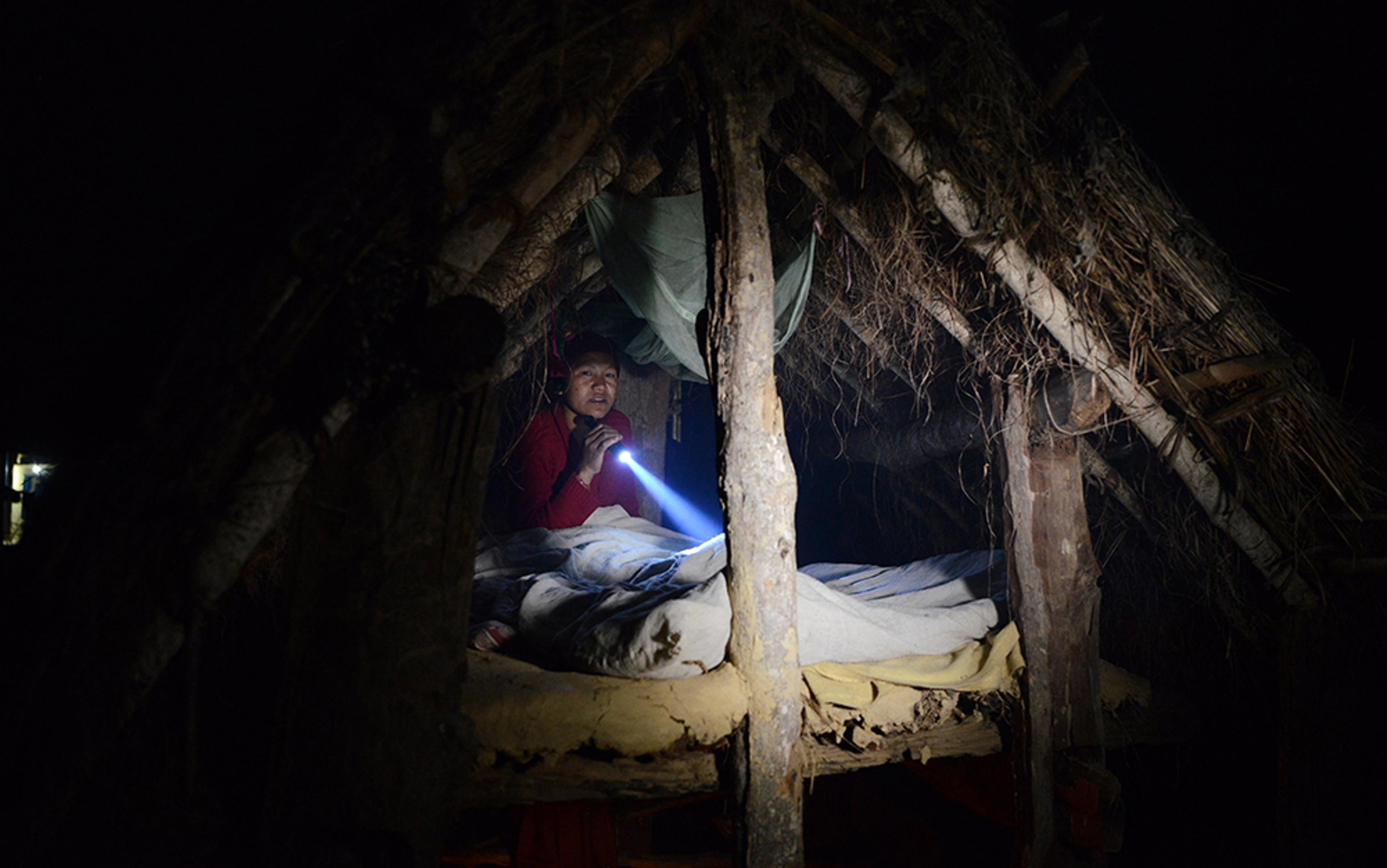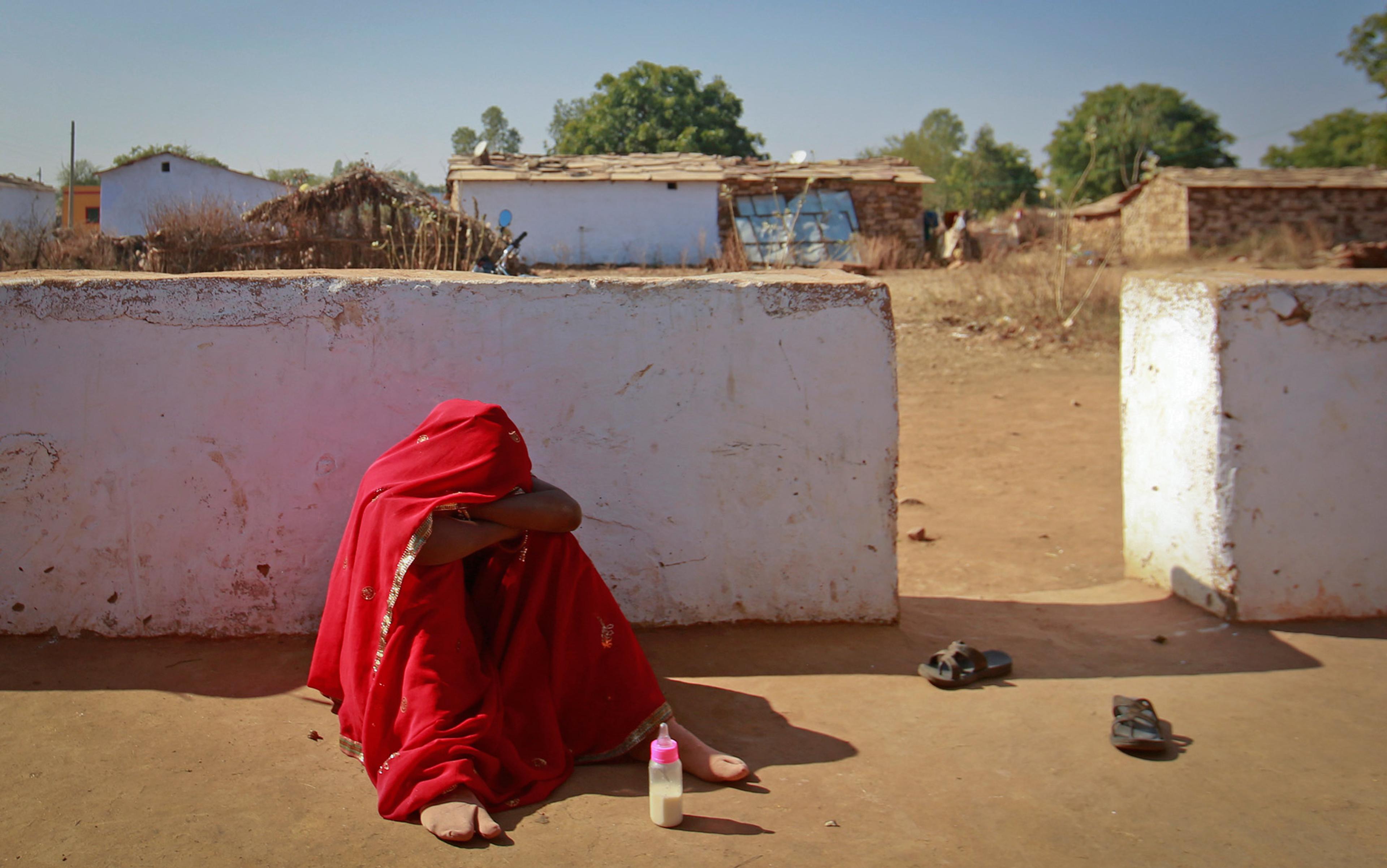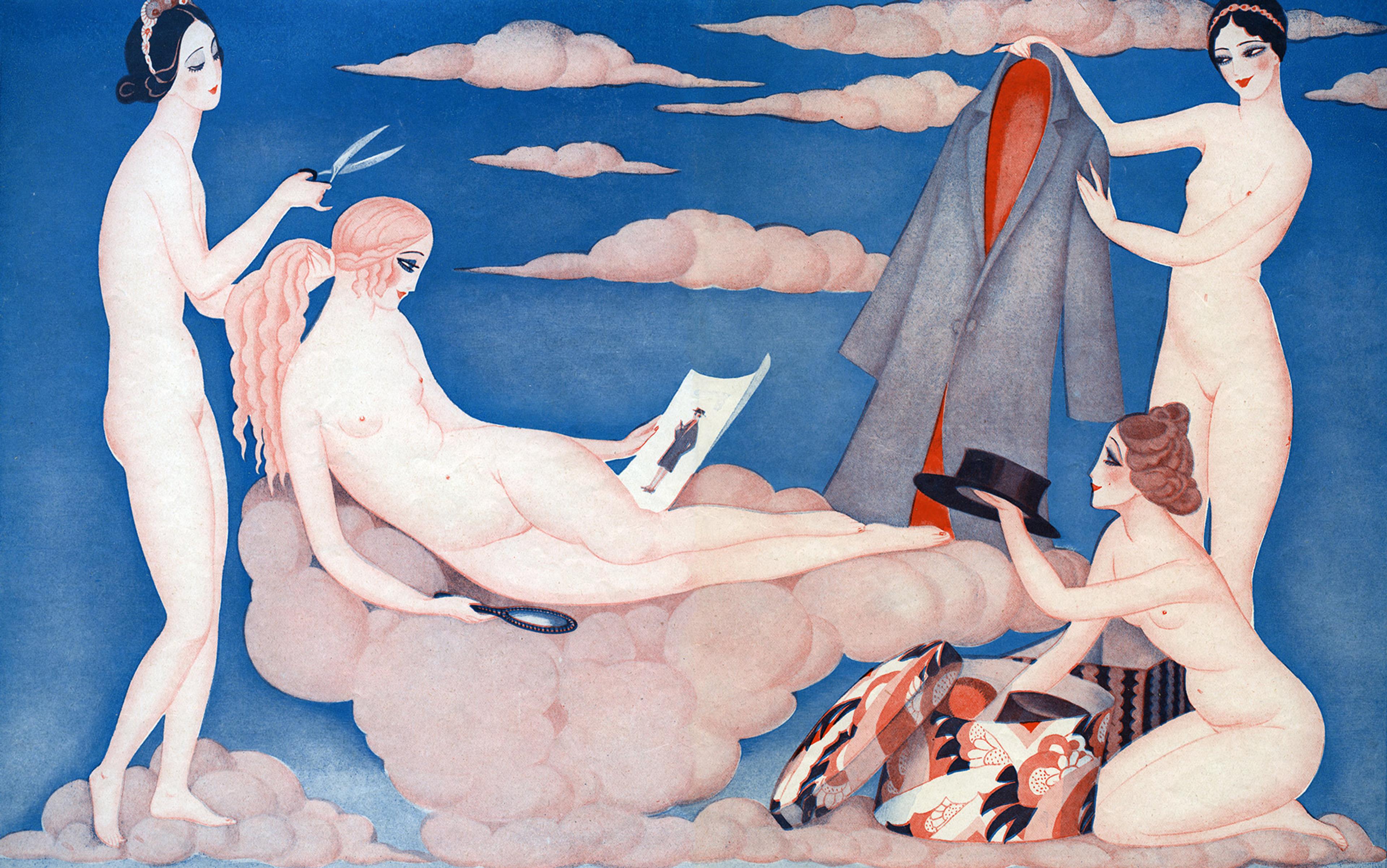Auntie Flo, on the rag, girl flu, back in the saddle, jam and bread, going to Oklahoma, howlin’ at the moon – these are just some of the many English expressions used to avoid the embarrassing subject of menstruation. The time has come to speak plainly and directly about this straightforward biological function of the human body. As you read this today, more than 800 million women worldwide are having a period. None of us would exist without it and yet it remains one of our most tenacious biological taboos. Writers and broadcasters happily discuss sex, digestion and blood circulation – all natural processes – while menstruation is still off-limits.
Few mammals menstruate – humans are unusual in this. While the hormones oestrogen and progesterone work together to precipitate ovulation, blood is directed to the uterus to make a spongey, nutritious endometrium (lining of the uterus) into which the fertilised ovum can embed and develop into a baby. If conception does not occur, the endometrium disintegrates, leaving the body through the vagina as a period. The thick endometria of humans means that, unlike dogs, we can’t just reabsorb the blood and tissue. So, five to 15 teaspoons of menstrual blood have to be dealt with over a few days. Buying and using menstrual products is inconvenient for most women, and disposing of all the pads and tampons is an increasing environmental problem for the world.
Menstrual literature all states that a ‘normal’ menstrual cycle is 28 days – any shorter or longer, or otherwise irregular, is ‘abnormal’ even though the woman can still conceive. At school, I associated ‘regular’ periods with tidy girls with neat hair who always did their homework on time. My own irregular periods were obviously a symptom of my lazy and disorganised mind.
Women have more periods now than in the past, because until the advent of contraception and bottle-feeding, women were either pregnant or breastfeeding for much of their lives. Also, poor diet and hard work meant that until the 20th century, most girls did not reach the menarche – the first period – until 17 or 18 years. The average age of menarche has dropped over the past century to 12.5 years.
All kinds of taboos and myths surrounded menstruation. The ancient Greeks believed that if a girl’s menarche was late, blood would accumulate around her heart, and her uterus would wander around her body. This could produce erratic behaviour, from violent swearing to suicidal depression. Right into the 20th century, any inappropriate behaviour or poor mental health in women was termed hysteria, after the Greek word for ‘uterus’.
Pliny the Elder, who died in 79 CE, warned: ‘If a woman strips herself naked while she is menstruating, and walks round a field of wheat, the caterpillars, worms, beetles, and other vermin, will fall from off the ears of corn … bees will forsake their hives if touched by a menstruous woman … linen boiling in the cauldron will turn black, the edge of a razor will become blunted.’ But then he also believed that drinking the blood of a gladiator would cure epilepsy.
Abbess Hildegard of Bingen (1098-1179) wrote that leprosy – which she believed was caused by either lust or intemperance – could be cured by washing in the ‘nourishing properties of menstrual blood … as much as he can get’. In medieval times, it was believed that if a man’s penis touched menstrual blood, it would burn up, and any child conceived during menstruation would be possessed by the devil, deformed, or red-haired. A woman with a heavy menstrual flow was advised to bind the hair from an animal’s head onto a young tree. If this failed, she could drink comfrey or nettle tea, while reciting numerical formulae; or she could find a toad, burn it dry, and put its ashes in a pouch around her waist.
Such was the taboo against the subject, that the historian Laura Klosterman Kidd of Iowa State University found not a single direct reference to menstruation in the 19th-century diaries, letters or inventories of wagon-trains of North American pioneer women. In 1878, letters to the British Medical Journal claimed that menstruating women would cause bacon to putrefy, and in 1916 the medical registrar Sir Raymond Crawford wrote that farmers still believed that menstruating women would prevent milk from turning to butter, or hams to cure. The paediatrician Béla Schick (1877-1967) believed that menstruating women released plant-destroying substances called ‘menotoxins’ through their skin. In 1919, he ‘proved’ it by asking women to arrange cut flowers. Sure enough, the flowers arranged by menstruating women died sooner. This claim was repeated in The Lancet in 1974, with the addition that a permanent wave would not ‘take’ to a woman’s hair during menstruation. As recently as 1980, I was told by a farmer’s wife in Shropshire that if a menstruating woman touched meat it would go rancid. When I queried this, she asked: ‘Have you ever seen a female butcher?’ It was true, I had not.
In 1946, Walt Disney premiered the animated educational film The Story of Menstruation, which was shown to more than 100 million high-school students across the United States. The first film ever to use the word ‘vagina’, it nevertheless managed to avoid any mention of sex or reproduction. Despite the narrator Gloria Blondell encouraging girls to bathe, ride a horse and dance while on their periods, the emphasis on sanitation reinforced the idea that menstruation was a hygienic crisis.
Many Chinese sports fans did not know it was possible for a menstruating woman to swim
Long before the connection between menstruation and fertility was understood, people noticed that periods occur about as often as the Moon waxes and wanes. The Yurok of California believed that if a woman’s menstruation failed to synchronise with the Moon, or with her fellow women, she could balance herself ‘by sitting in the moonlight and talking to the Moon’. The synchronisation of periods among women who live together, such as in prisons, convents and boarding schools, emerged again in 1971 in a study from the psychologist Martha McClintock at Harvard indicating that women’s bodies co-operate in the face of male domination. But in 2016, the medical anthropologist Alexandra Alvergne at the University of Oxford explained that the idea was biased by contemporary feminist theory, and did not stand up to the statistics of chance – an example of biased research influenced by fashion.
The US children’s author Judy Blume was reputedly the first novelist to mention periods in Are You There, God? It’s Me, Margaret (1970). Keeping up with the times, Margaret’s sanitary-towel belt has been replaced in recent editions with a simple pad. It was not until 1985 that the word ‘period’ was used in a television commercial; and in 2010, US TV networks banned a tampon commercial from using the word ‘vagina’ or even ‘down there’. To this day, advertisers use a mysterious blue liquid to demonstrate the absorbency of sanitary towels. When the Canadian poet Rupi Kaur posted a picture of herself in 2015 fully clothed but with a spot of blood on her trousers, it was removed by Instagram, twice. Menstrual blood is still referred to as ‘fluid’ or ‘flow’. ‘Blood is fine in horror films, but somehow becomes taboo when it’s pouring from vaginas,’ wrote Michele Hanson recently in The Guardian.
Attitudes are changing, but slowly. At the 2016 Olympics in Rio, the Chinese Olympian swimmer Fu Yuanhui amazed the media by admitting that she was having a period. Many Chinese sports fans did not know it was possible for a menstruating woman to swim. But in 2017, the BBC reinforced the taboo about periods when Evan Davis, the television presenter of Dragon’s Den, questioned why anyone would launch a sanitary product mail-order business ‘that only half the population will ever use’.
The Book of Leviticus states that menstruating women are unclean and so is anything they touch, including their husbands. Such negative attitudes towards menstruation reinforced the Christian Church’s general suspicion about women. Catholic doctrine argued that Eve was to blame for the eviction from Eden, and menstruation and its pains were a reminder of Eve’s sin. Even today, a period is still called ‘the curse’ by many people. Until 1916, Roman Catholic women were forbidden to receive holy communion while menstruating. In Eastern Orthodox churches, menstruating women are still expected to refrain from receiving communion and remain outside the building. In Nepal, the Hindu practice chaupadi – sending menstruating women to special secluded mud huts called goths – was banned in 2005, but continues in remote areas. In Japan, Shinto women are barred from temples during menstruation, and prohibited from climbing certain sacred mountains.
In a comment piece for The Tablet Catholic magazine in 2016, the British theologian Carmody Grey wrote: ‘If any other event caused me or anyone that amount of pain, disruption and blood loss, it would feature largely in our social interactions … Quite simply, women bleed and suffer so that others can live … Quite literally, shedding blood for the life of humanity is just what women do.’
How have women in history managed their periods? There is no evidence, other than repetition of the stories on websites, that ancient Egyptian women used tampons made from softened papyrus, or that the Greeks used lint wrapped around bits of wood. ‘Polluted rags’, as the prophet Isaiah called them, or ‘clouts’ as they were termed in 17th-century England, were made from fabric, hemp or sphagnum moss. Queen Elizabeth I (1533-1603) owned three black silk girdles to keep in place her linen ‘vallopes of fine hollande cloth’. A pair of ‘knickers’ or ‘pantaloons’, one for each leg, was held up with tape around the waist. This allowed for quick access and less soiling. My grandmother, born in 1886, used linen rags which were washed by hand by her maid.
In less-developed countries, menstrual cloths are still looped over a string around the waist and after washing are dried under beds, or left hanging under the skirt. Jennifer Phiri, a 16-year-old schoolgirl in Malawi described to me her menstrual care:
All what my mum could afford was just two pieces of a torn cloth. It wasn’t good at all ’cause every time I finish I could actually see some sores between my upper legs and were so much painful. When having my menstruation, I could no longer dance, run, or even walk fast, and sometimes I could stain my clothes. I could hardly [rarely] go to school, so just stay at home until I finish. I could badly smell because the cloth was in contact with air.
Southalls of Birmingham advertised disposable pads in 1888, suitable for ‘Ladies Travelling by Land and Sea’, and Lister’s Towels created by Johnson & Johnson in the US were available from 1896. During the First World War, French nurses discovered that ‘Cellu-cotton’ field bandages for dressing wounds absorbed menstrual blood well, and could be burned after use. During the Second World War, William Morris, the British car manufacturer, paid for disposable sanitary pads for all the women in the British armed forces. They were called ‘Nuffield’s Nifties’. The sanitary pad made of cotton wool covered in cotton gauze was held in place with an elastic belt round the waist. After use, it was placed in a paper bag, often illustrated with a lady in a crinoline. Until the 1970s, ladies’ public lavatories smelt of burning cotton wool from a metal incinerator, or the U-bend was blocked with used pads.
In 1929, the osteopath Earle Haas in Denver invented the internal ‘catamenial device’, using two cardboard tubes and cotton wool compressed into a tampon (French for ‘plug’, originally a medical term for a dressing jammed into a wound). Four years later, he sold the patent for Tampax for $32,000 to Gertrude Tendrich who made tampons with a sewing machine and an air compressor. In 1980, the material for tampons was changed from cotton wool to the more absorbent cellulose, which encouraged women to leave them in longer. Soon, fatal cases of toxic shock syndrome (TSS) were reported. As soon as manufactures reverted to the original material, the incidence of menstrual TSS decreased.
In 1969, the same year that Neil Armstrong landed on the Moon, a glue was invented that held sanitary pads onto knickers, without sanitary belts. Then ‘wings’ and plastic backing were introduced to reduce leaking; and pads were made with more absorbent, but less biodegradable, petroleum-based polyacrylate superabsorbent gels.
Girls in Malawi miss more school days a month due to menstruation than for malaria
Each fertile woman uses about 250 pads or tampons each year, so in the UK there are 3,750 million to dispose of, plus about 300 million plastic bags or boxes. Research is needed into the amount of energy used to grow the cotton and wood, then manufacture the products, transport and finally dispose of them. Disposable pads and tampons take up to 800 years to decompose.
Only recently has an environmentally friendly method been invented, and by a woman. The menstrual cup is made of soft silicone and placed inside the vagina where it collects the blood, and is removed and washed out every few hours. At the end of each period, it is boiled in water, ready for the next period. Each cup lasts for up to 10 years, and so avoids the waste from the 2,500 pads or tampons that would be used in that time. ‘Few people have heard of menstrual cups because there’s little profit in a product you only buy once every 10 years,’ explains Mandu Reid, the British founder of the Cup Effect. ‘Many people said that African women wouldn’t use them because they are “uncultural”. But with sensitive training, we found that the women and schoolgirls we met were, almost unanimously, keen to try them.’ Menstrual cups are increasingly common in the US and Europe, and used by Peace Corps volunteers and schoolgirls in Uganda, Malawi, Kenya and Tanzania.
Unfortunately, millions of women still suffer every month from practical, economic and cultural barriers to menstruation. All over the world, they have to bathe separately from their families, are forbidden to cook, meet their friends or share a bed with their husbands. In Malawi, many people still believe that menstruation is an illness that will cause infertility or even death to a husband. Menstruating women must not plant seeds, breastfeed or dry their menstrual cloths outside for fear of witchcraft against them. More than half of all girls in Malawi miss one to two hours of school while they’re on their periods, and 15 per cent miss more than three days per term – which is more than the absence due to malaria. With a year’s supply of sanitary pads costing 15 per cent of the average annual income of $340, 95 per cent of the 4 million women menstruating in Malawi use rags, leaves or grass. The Malawi Girl Guides Association now includes menstrual education in their activities, giving schoolgirls and refugees a menstrual cup each and a metal pan for sterilising them.
When the UK joined the European Economic Community in 1973, male politicians agreed that menstrual products were ‘non-essential items’, unlike babies’ diapers, men’s razors, helicopters or crocodile steaks, all of which are tax-exempt. In 2014, Laura Coryton started a British petition calling for the abolition of tax on sanitary products. ‘Periods are no luxury. You can “opt-in” to extravagance. You cannot choose to menstruate,’ she wrote. After 320,086 UK citizens signed the ‘End Tampon Tax Campaign’, the then prime minister David Cameron announced that the British government would abolish ‘tampon tax’.
However, in February 2017, Coryton wrote: ‘Following Brexit complications, this amendment will be implemented by April 2018 at the very latest. That sucks.’ She then launched the organisation Period Watch to ensure that the tax is removed and reduce the period taboo. In Australia, there is the ‘Drop It Coz It’s Rot’ campaign against the 10 per cent tampon tax. In the US, only 11 states have no tax, while California generates $20 million a year from menstruating women.
In 2014, the United Nations declared 28 May as an annual Menstrual Hygiene Day. The date was chosen because the average menstrual period lasts five days, and happens every 28 days. But why did the UN add the word ‘hygiene’? Was it because even in the 21st century, menstruation is considered ‘unclean’. I prefer to call it World Menstrual Day. It is now celebrated by 380 partner organisations all over the world. There are hundreds of websites and Facebook groups dedicated to periods, such as Menstrual Matters, Period Positive, The Bloody Waste! and Ragtime Revolution.
The great paradox of menstruation is that it can be both proof of womanhood and fertility, and also a source of shame and inconvenience. In recent years, most women’s lives have improved economically, politically and socially. But even though we’re now more comfortable physically during menstruation, we’re still embarrassed to talk about this normal part of our lives. I regret that I’m now too old to announce on a crowded train: ‘I’m having a heavy period. Is anyone going to offer me their seat?’






